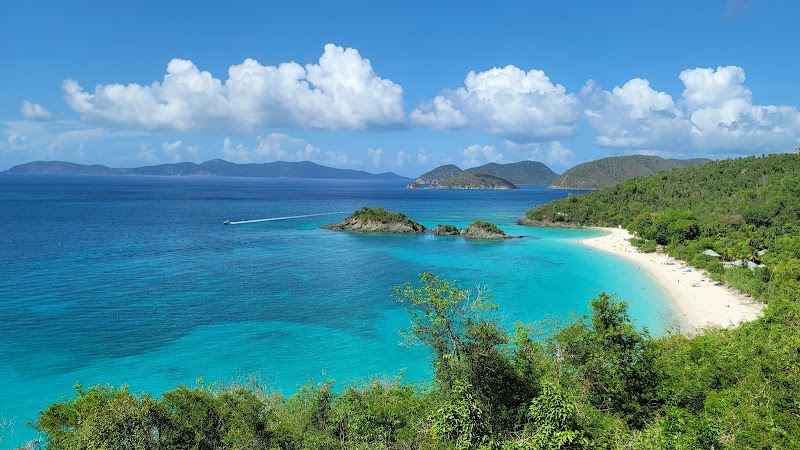Best Snorkeling Spots Near St. John: Exploring Virgin Islands' Underwater Wonders
Discover St. John's top snorkeling spots where vibrant reefs and marine life create unforgettable underwater experiences. This guide combines practical tips with vivid descriptions to help you explore the Virgin Islands' marine treasures with confidence.
Choose Timing Wisely
Plan snorkeling sessions during early morning or late afternoon for calm waters and better visibility.
Use Reef-Safe Sunscreen
Protect your skin and the marine environment by applying biodegradable, reef-safe sunscreen.
Fit Your Gear Correctly
Ensure your mask fits securely and snorkel is clear to avoid discomfort and water leaks during your swim.
Respect Currents
Observe local water conditions; currents can shift swiftly, especially around Waterlemon Cay—stay within your skill level.
Best Snorkeling Spots Near St. John: Exploring Virgin Islands' Underwater Wonders
Immersed in the crystalline embrace of the Caribbean Sea, St. John offers some of the Virgin Islands' finest snorkeling adventures. Each cove and reef stands fiercely alive beneath the surface, inviting you to explore vibrant coral gardens and darting schools of tropical fish. Whether you're slipping into the calm waters of Trunk Bay or diving along winding reefs at Waterlemon Cay, the underwater world here pulses with color and energy that’s both thrilling and accessible.
Trunk Bay is the most iconic snorkeling destination near St. John, with a clearly marked underwater trail stretching approximately 425 yards. The reef here is low-lying and teeming with colorful coral formations and curious parrotfish that seem to guide your path. Its shallow, calm waters make it ideal for beginners or families—yet the panorama of marine life keeps even seasoned snorkelers alert.
For a more adventurous swim, Waterlemon Cay on the island’s east side offers a denser coral maze. A short boat ride or a sturdy hike over coral-strewn paths leads you to this underwater sanctuary. Here, currents push gently, urging you forward into the rich ecosystem of sponges, sea fans, and elusive lionfish. This spot demands a bit more confidence and stamina but rewards with spectacular encounters.
If you prefer a quieter spot away from the crowds, Maho Bay hides just a half-mile from Cruz Bay. Its sandy bottom and gentle waves allow for leisurely observation of green sea turtles and southern stingrays. Snorkeling here during early morning hours means meeting few others, improving your opportunity to sync with the pulse of this underwater domain.
Preparation is key. Your gear should be well-fitted and reliable—leaks or fogged masks can quickly cool your enthusiasm. Consider timing visits during low winds and calm seas where waters lighten to a vibrant turquoise, revealing deeper details. Stay hydrated; the sun here can push fiercely, and water temperatures fluctuate with subtle changes in weather patterns. Waterproof reef-safe sunscreen is a practical necessity, protecting both you and these fragile habitats.
In every splash and glance beneath the waves, the Virgin Islands’ reefs warn against neglect—fragile yet fiercely alive. Snorkeling near St. John is not just a swim; it’s a measured conversation with a living sea, one that invites respect, curiosity, and careful navigation. Those who come prepared will find the adventure not just exhilarating but deeply rewarding.
Nearby Trips
All Adventures
Boat Charters
Water Activities
Adventures near Cruz Bay
Discover the unique and memorable adventures that make Cruz Bay special.
Frequently Asked Questions
Which snorkeling spot near St. John is best for beginners?
Trunk Bay offers a marked underwater trail with shallow, calm waters ideal for novice snorkelers and families seeking easy access to vibrant marine life.
Are there any hazardous marine animals in these snorkeling areas?
While not aggressive, lionfish appear around Waterlemon Cay and can sting if touched. Exercise caution and avoid touching any unfamiliar marine creatures.
Can I reach Waterlemon Cay by foot from Cruz Bay?
Waterlemon Cay requires either a boat ride or a challenging hike over uneven terrain; the trail includes rocky sections and coral rubble, so sturdy footwear is advised.
What environmental measures should snorkelers observe here?
Avoid touching or standing on coral, use reef-safe sunscreen, and do not feed marine animals to help preserve the delicate reef ecosystems.
Are there facilities near the main snorkeling beaches?
Trunk Bay provides restrooms and a small snack bar, but other spots like Maho Bay are more rustic, so bring water and supplies accordingly.
When is the best time of day for snorkeling in terms of wildlife activity?
Early mornings often bring calmer seas and more active fish, increasing the chances of spotting turtles and rays before crowds arrive.
Recommended Gear
Snorkel Mask and Snorkel
A well-fitted mask and snorkel are vital for clear underwater vision and comfortable breathing, crucial for safe and enjoyable snorkeling.
Reef-Safe Sunscreen
Protects skin while preserving the fragile reef ecosystem from harmful chemicals.
Fins
Provide efficient swimming with less effort, especially useful when currents strengthen near reefs.
Waterproof Dry Bag
Keeps personal items dry on boat transfers and shore entries.
Local Insights
Hidden Gems
- "Little Lameshur Bay – A less visited cove with shallow reefs and excellent turtle sightings."
- "Ram Head’s underwater reef edges – Known for vibrant sponges and colorful fish."
Wildlife
- "Green sea turtles"
- "Southern stingrays"
- "Parrotfish"
- "Lionfish (invasive, watch but don’t touch)"
History
"St. John’s marine sanctuaries are part of the Virgin Islands National Park, established in 1956 to protect coral reefs and local biodiversity important to the island’s fishing communities."

